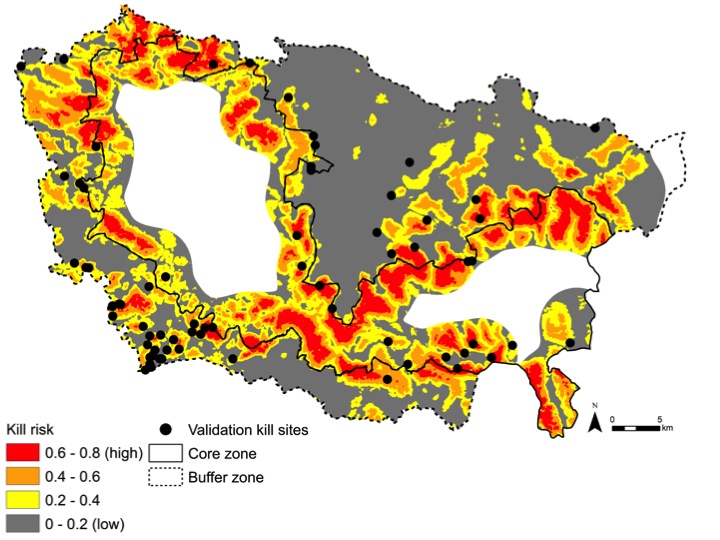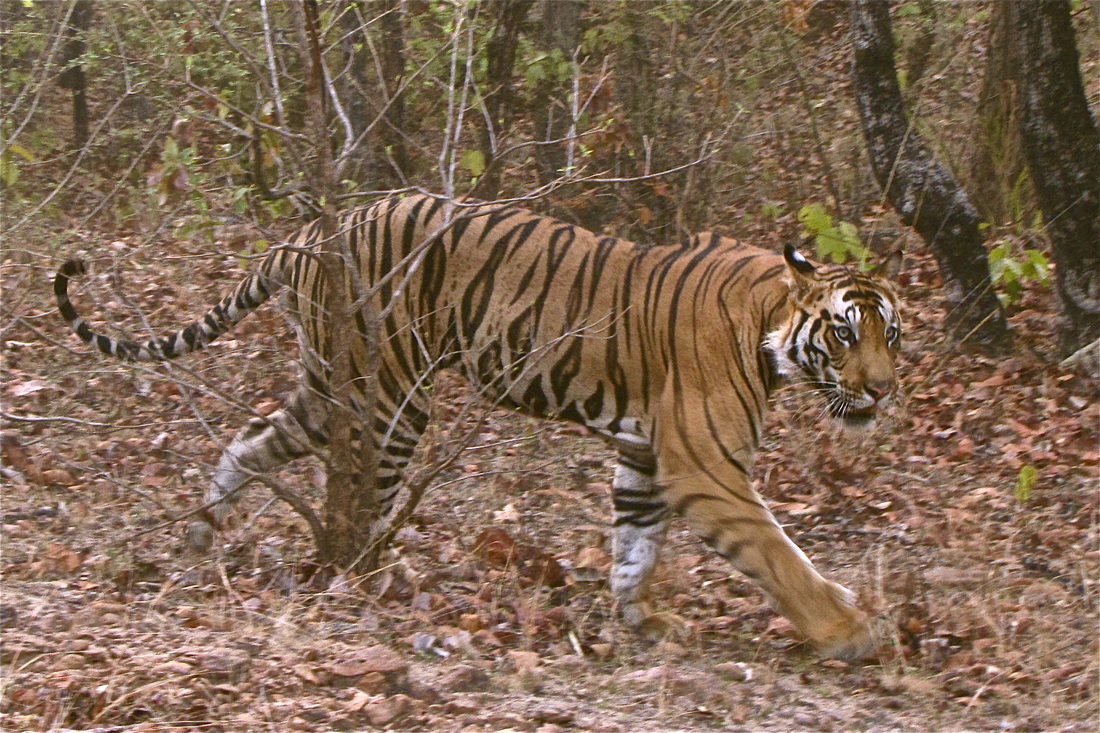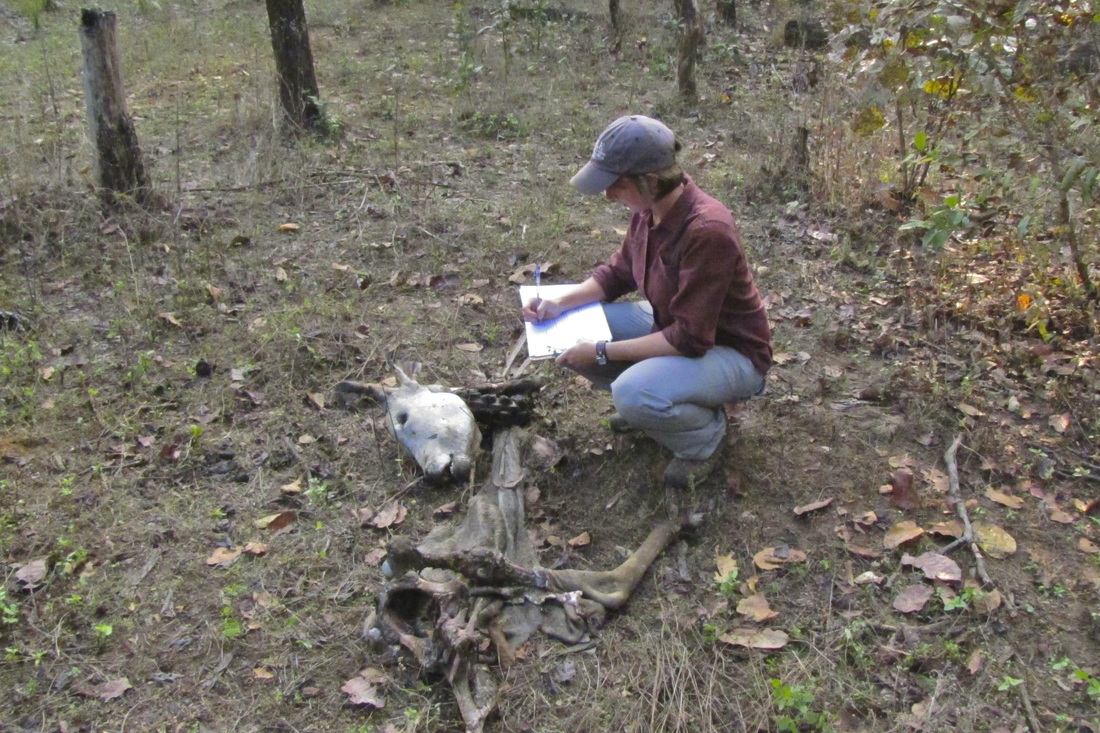|
-- Jennie Miller, PhD '15 Originally published in the Yale F&ES Blog There are now fewer tigers in the wild than there are graduate students at Yale. Around 3,500 tigers, to be precise, dispersed through nine countries across Asia, and declining by the day. One of the greatest threats to tigers is retaliation from villagers after attacks on livestock. But to be fair, living with tigers in your backyard isn’t easy. Tiger attacks on livestock cause major income losses for pastoralists – up to 80% in some villages – threatening people’s livelihoods and personal safety. Yet this chain of conflict – cat kills cow, cow’s owner kills cat – is quickly emptying the jungles of the world’s most magnificent carnivore. In an effort to curb this human-tiger conflict, I focused my PhD on developing a tool to predict future attacks on livestock as a guide for grazing management and carnivore conservation. Specifically, I explored where and why tigers attack livestock, research that was recently published in Ecology and Evolution. I carried out my work in Kanha Tiger Reserve in Madhya Pradesh, central India. With its dense forests, Kanha serves as a stronghold for tiger conservation and is home to one of India’s largest tiger populations (around 70 individuals). Yet this booming source of tigers is a double-edged sword for local residents. The park’s ‘hard’ edge, formed by thick forests meeting sprawling agricultural fields, creates an abrupt interface between tigers and domestic animals where livestock are attacked daily. To assess tiger hunting I went straight for the kill – dead livestock – and investigated more than 400 animals killed by large carnivores around Kanha Tiger Reserve in central India. Using these kill sites, I built a spatial ‘risk model’ to identify the landscape features where tigers targeted livestock and map where future kills would occur. I found that tigers avoided human-dominated areas, like agricultural fields, and favored thick jungle where they could ambush grazing livestock. The risk of a tiger killing livestock increased near dense forests and away from roads, villages and open vegetation. As expected for a stalking carnivore, tigers killed livestock at sites with denser, patchier and more complex vegetation with low visibility.  This risk map shows the relative probability of a tiger attacking livestock in Kanha Tiger Reserve, India. Risk models like these may assist managers and livestock owners in guiding livestock grazing away from high-risk habitats where tigers are most likely to attack, such as the dense forests around the park core zone boundary. Figure from Miller et al. 2015. Model predictions at a landscape scale showed high-risk livestock depredation hotspots inside the park core zone boundary, where livestock grazing is banned but still occasionally occurs. Hotspots were also located in several forest patches in the human-dominated buffer zone of the park.
In working with park staff, I found that these risk hotspot maps could be an appealing visual tool for helping wildlife managers and livestock owners adapt grazing practices to minimize attacks. By grazing livestock in low-risk areas, such as open vegetation where tiers are less likely to attack, herders may be able to reduce livestock losses. Risk maps may also be useful for managers for targeting mitigating techniques, like fencing and awareness campaigns, to communities where tiger threats are highest. When combined with financial compensation to subsidize pastoralists incomes, these adaptive measures could offer simple, science-based practices for mitigating human-carnivore conflict. Additional research is still needed to explore the full utility and ramifications of using risk models for guiding management. Nonetheless, I feel hope that innovative, applied tools may offer new methods for enabling people and tigers to share landscapes. If so, then there might be a day in my lifetime when Yale graduate students are the rarer species. Research article: Miller, J.R.B., Y.V. Jhala, J. Jena and O. J. Schmitz. 2015. Landscape-scale accessibility of livestock to tigers: implications of spatial grain for modeling predation risk to mitigate human-carnivore conflict. Ecology and Evolution 5(6):1354–1367. |
Archives
November 2019
Categories
All
|


 RSS Feed
RSS Feed
